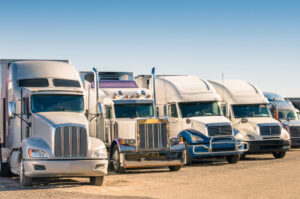- Trucks are motor vehicles designed to carry goods, cargo, or equipment.
- There are three main classes of trucks based on size and capability: Class 1 (0-6,000 lbs), Class 2 (6,001-10,000 lbs), and Class 3 (10,001-14,000 lbs).
- Different types of trucks include dump trucks, pickup trucks, flatbeds, and tow trucks.
- Consider the type of truck best suited for your needs when selecting one.
Trucks are an invaluable asset in our lives, and the type of truck you choose for your needs will depend on several factors. Whether you need a truck for work or recreation, this guide will help you understand the different types of trucks available today and their uses.
What is a Truck?
Before discussing the various types of trucks, it’s essential to understand what a truck is. A truck is a motor vehicle designed to carry goods, cargo, or equipment. It typically features an open-box bed and four wheels. Trucks are commonly used for hauling materials from one place to another, but they can also be used for recreational purposes such as camping and off-roading.
Classes of Trucks
Trucks come in various shapes, sizes, and capabilities, depending on their class. Knowing which truck class is best for your needs can help you save money and do the job more efficiently. Here’s a look at the three main classes of trucks and how they differ.
Class 1 Trucks
Class 1 trucks are also known as light-duty trucks. These include smaller vehicles such as pickup trucks or vans with a GVWR (gross vehicle weight rating) between 0-6,000 lbs. Class 1 trucks have either a gasoline or diesel engine and can be used for everyday activities such as commuting to work or running errands. They are also ideal for hauling small loads such as furniture, tools, or gardening supplies since they don’t require a commercial driver’s license (CDL).
Class 2 Trucks

Class 2 trucks are more significant than Class 1 but are still considered light-duty vehicles. They typically have a GVWR between 6,001-10,000 lbs and can include cargo vans, box trucks, and flatbeds. Class 2 trucks may require a CDL if used for commercial purposes such as delivering goods or transporting passengers (i.e., taxis). Small businesses often use these vehicles that need to transport large items but don’t want to invest in a bigger truck.
Class 3 Trucks
Finally, Class 3 trucks are considered medium-duty vehicles with GVWR ratings of 10,001-14,000 lbs. Examples include dump trucks, garbage trucks, and tow trucks. Class 3 vehicles require drivers to have both a CDL and additional training on operating these heavier vehicles safely. Municipal governments most commonly use them as utility companies or contractors who need to move heavy materials or equipment regularly.
Different Kinds of Trucks
As mentioned, there are a variety of trucks to choose from depending on your needs. Businesses and communities transport materials using box trucks, dump trucks, and flatbeds. Here are some examples:
Dump Trucks

Dump trucks are designed for hauling large amounts of material, such as dirt and gravel. They usually have an open bed with sides that can be raised so that the materials can be dumped out when needed.
A dump truck may also require a commercial trash compactor to aid in the disposal. The compactor is located in the truck bed and compresses waste materials to transport them to a landfill or other disposal site safely.
Pickup Trucks
Pickup trucks are the most popular kind of truck on the roads today. They can be used for many things, from hauling heavy cargo to towing recreational vehicles. Pickups come in three sizes – full-size, mid-size, and compact – so you can find one that fits your needs. Full-size pickups have more power than smaller counterparts, while mid-size and compact pickups are great for everyday commuting and light hauling.
Flatbed Trucks
Flatbed trucks are ideal for large loads that can’t fit into a pickup bed or trailer. These trucks have a flatbed with no walls or sides, meaning they can carry items of any shape or size as long as they fit within their weight limit. They also tend to have higher ground clearance than other trucks, making them great for off-roading and taking on rough terrain.
Tow Trucks
Tow trucks are essential for recovering vehicles from accidents or breakdowns. They come in two types — wheel lift tow trucks, which use hydraulics to raise one end of the vehicle being towed; and flatbed tow trucks, which use a flat trailer bed to transport vehicles quickly and safely over long distances. Tow truck drivers must undergo special training before operating these powerful machines safely and effectively.
Final Thoughts
When choosing a truck for your needs, consider what type best suits your lifestyle or business requirements. Pickup trucks offer versatility while flatbeds offer more capacity for larger items; dump trucks provide convenience when hauling dirt or gravel; and tow trucks help get stranded vehicles back on the road again quickly and safely. With this guide in hand, you’ll be ready to find the perfect truck for all your needs!











